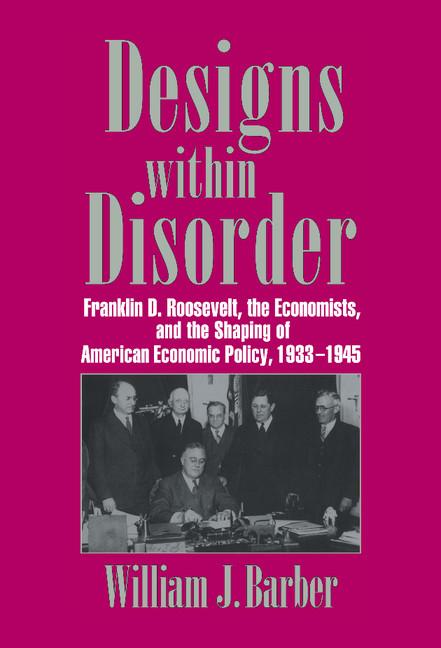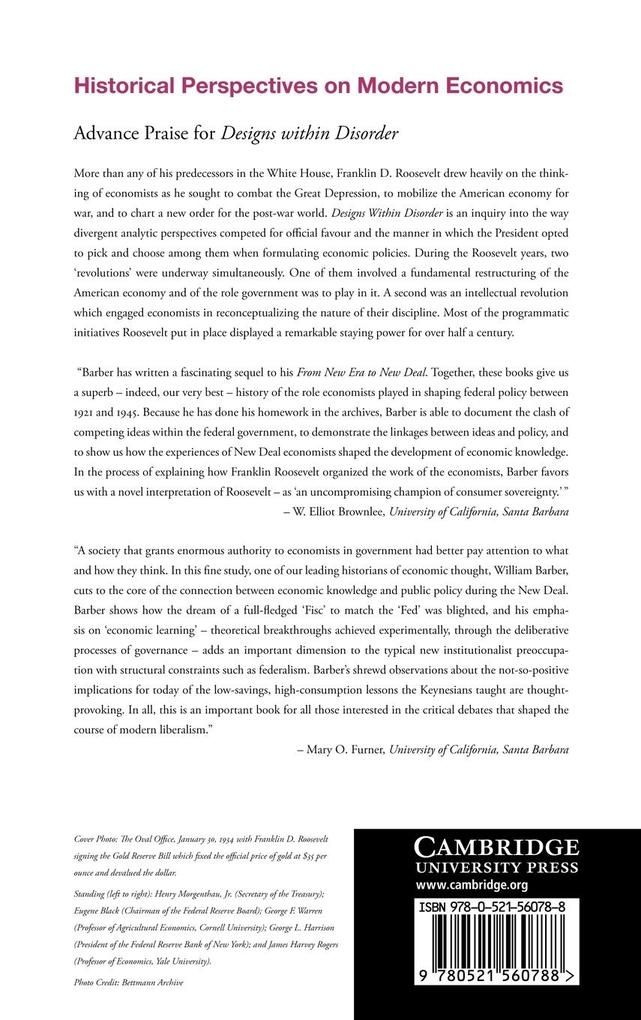
Zustellung: Mi, 23.07. - Sa, 26.07.
Versand in 7 Tagen
VersandkostenfreiBestellen & in Filiale abholen:
More than any of his predecessors in the White House, Franklin D. Roosevelt drew heavily on the thinking of economists as he sought to combat the Great Depression, to mobilize the American economy for war, and to chart a new order for the postwar world. Designs within Disorder is an inquiry into how divergent analytic perspectives competed for official favor and how the President chose among them when formulating economic policies. During the Roosevelt years, two "revolutions" were underway simultaneously. One of them involved a fundamental restructuring of the American economy and of the role government was to play in it. A second was an intellectual "revolution", which engaged economists in reconceptualizing the nature of their discipline. Most of the programmatic initiatives Roosevelt put in place displayed a remarkable staying power for over a half century.
Inhaltsverzeichnis
Preface; Guide to abbreviations in citations of sources; Prologue; 1. Stage setting in the presidential campaign of 1932; 2. Curtain raising in the first hundred days; 3. Deployments in the second half of 1933; 4. Rethinking the structuralist agenda (I): the fate of NRA, 1934-5; 5. Rethinking the structuralist agenda (II): the fate of the Agricultural Adjustment Administration, 1934-6; 6. Rethinking macroeconomic strategies, 1934-6; 7. Shock tremors and their repercussions, 1937-8; 8. Toward a new 'official model,' 1939-40; 9. Designs for the management of an economy at war; 10. Designs for the postwar world; Epilogue; Bibliographical note; Index.
Produktdetails
Erscheinungsdatum
30. Mai 2012
Sprache
englisch
Seitenanzahl
192
Autor/Autorin
William J. Barber
Verlag/Hersteller
Produktart
gebunden
Gewicht
437 g
Größe (L/B/H)
235/157/15 mm
ISBN
9780521560788
Entdecken Sie mehr
Bewertungen
0 Bewertungen
Es wurden noch keine Bewertungen abgegeben. Schreiben Sie die erste Bewertung zu "Designs Within Disorder" und helfen Sie damit anderen bei der Kaufentscheidung.










